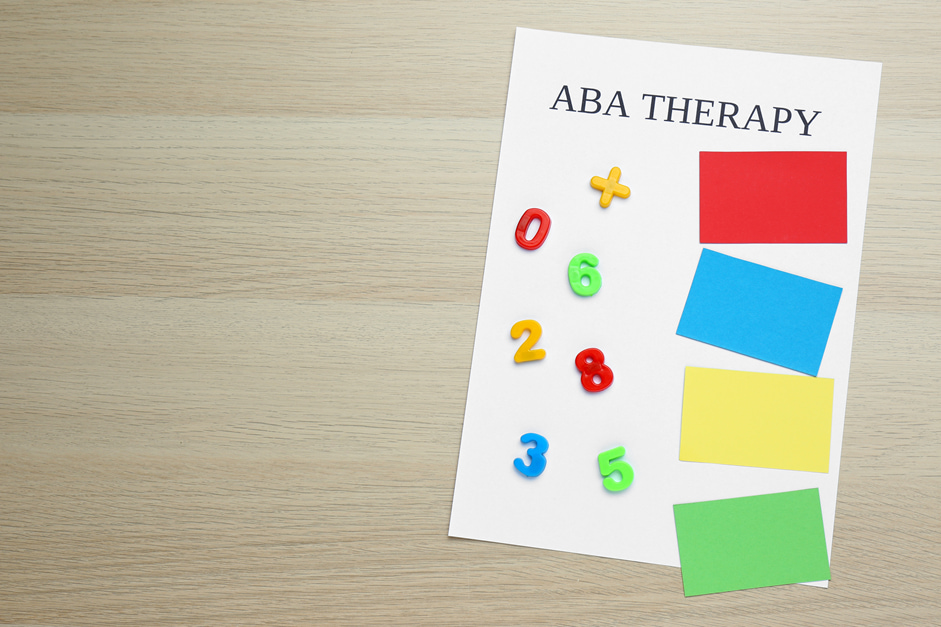Understanding Tact in ABA
Applied Behavior Analysis (ABA) is an evidence-based practice that focuses on improving specific behaviors, particularly in individuals with autism spectrum disorder (ASD) and other developmental conditions. Within ABA, language and communication are divided into “verbal operants”, each describing how and why language is used. One of the most critical verbal operants is tact.
Understanding tacting in ABA provides insight into how individuals learn to label and describe words around them. In this article, Above and Beyond Therapy, leading providers of ABA, explore what a tact is, why it is crucial in ABA therapy, how it differs from other types of communication, such as mand, and how it can be effectively taught across various settings.
What is a Tact?
So what is tacting in ABA? In the framework of ABA, a tact is the label given to an object, action, event, or condition. The term originates from B.F. Skinner’s analysis of verbal behavior, where he defines a tact as a response that is evoked by a non-verbal stimulus and reinforced socially. Simply speaking, tacting involves naming, identifying, or describing something that the speaker can see, hear, smell, taste, or feel.
For example, when a child sees a dog and says “dog”, that is a tact. The child is not asking for the dog or responding to a question, but simply labeling what they have observed around them.
Tact and Other Verbal Operants
Tact is not the only verbal operant in ABA, and people sometimes get confused with the different operants. Below is a list of the four most elementary verbal operants in Applied Behavioral Analysis.
Tact: A label or comment
Mand: A request for something.
Intraverbal: A response to another person's verbal behavior, such as answering a question.
Echoics: The repetition of someone else's verbal behavior.
The key difference between tact and the other verbal operants is that tacts are spontaneous labels or comments about the environment around the individual and are not directly prompted.

The Importance of Tact in ABA Therapy
Tacts play a fundamental role in a person's ability to communicate. Tacting in ABA is a pivotal skill that allows individuals, especially those with autism, to express observations, share experiences, and engage in more reciprocal social interactions.
Children with autism often tend to struggle with labeling and describing their environments, which can impact their ability to communicate effectively. By systematically teaching tacts, ABA therapists can help children build a vocabulary that improves overall communication skills.
What Are The Benefits of Teaching Tact?
There are various benefits of teaching tact in an ABA therapy setting. These include:
Promoting Social Interactions:
Tacting opens the door to more natural and spontaneous social conversations. When children label things in their environment, they can share observations, participate in various interactions, and connect with the people around them, thereby enhancing their social relationships and fostering a sense of belonging.
Improves Self-Expression:
By learning to tact, individuals gain tools to better describe their needs, feelings, and thoughts. This leads to fewer seemingly unexplained behavioral outbursts stemming from communication frustrations, empowering them to express themselves more effectively.
Supports Academic Learning:
Talking is crucial in academic contexts. From naming objects and people to describing events or actions, tacting supports successful comprehension and verbal participation across various academic subjects, enhancing the learning experience and academic performance.
Tact as a Bridging Skill
Tacting serves as a bridge between experience and language. It allows individuals to associate their sensory experiences with spoken words, laying the groundwork for more complex forms of communication.
This bridging function is essential in:
- Receptive language: The more words a child can tact, the more comfortable they become with understanding those words when heard.
- Expressive language: Tacting provides the basis for expressing preferences, ideas, and observations.
- Generalization: Once a tact is learned, it can be generalized to new environments and contexts, promoting flexible and adaptive communication.

Tact ABA Examples
Tacting involves objects, people, actions, sounds, smells, textures, and emotions. It goes beyond simply naming things to include a broader range of descriptive language that can enhance communication and understanding. Here are some examples of common tacts in ABA:
- Object tacting: The Child sees a car and says “Car”.
- Attribution tacting: The child observes that the ball is red and says “Red ball”.
- Smell tacting: The child smells a flower and says, “It smells nice”.
- Action tacting: The child watches someone run and says “Running”.
- Conditions tacting: The child feels water and says “wet”.
- Abstract tacting: The child sees a smiling face and says “Happy”.
How to Teach Tact in ABA
Teaching tact involves structured yet naturalistic methods, designed to foster language development and communication skills. In ABA, tact aims to ensure that the learner can associate a stimulus with the correct label and use that label independently across various situations.
One of the methods of tact that ABA applies is direct instruction. This involves teaching new words with prompts, such as presenting a picture and asking what they see. If the child answers correctly, they are praised or rewarded. If they answer incorrectly, the therapist may model the response and then allow the child to repeat it. Sometimes children need to hear a label multiple times before they can produce it independently.
With Natural Environment Teaching (NET) practices, learning occurs in more naturalistic settings, increasing the chances of generalization and spontaneous use. For example, while walking outside, the therapist can point to an object and prompt the child to label it. Reinforcements come from real-world social responses, such as “Yes! I also see that”.
Implementing Tact Training in Various Settings
Tacting isn’t just for therapy rooms. Real learning happens across various environments, broadening the child's opportunities for growth and improvement.
Providers and carers can apply tact training at home, integrating learning into the child’s daily routine. For example, asking the child during mealtime, “What is this?” or inquiring about a spoon or food item, or on a trip to the park or zoo. Additionally, ABA can take place in school., Teachers can embed tact training in group activities or classroom activities. This brings their newly acquired skills into real-world situations, allowing them to learn and practice.
Wrapping Up the Importance of Tact in ABA
Tact in ABA is more than a technical term; it is an important communication skill that allows individuals, especially those with autism, to engage with the world meaningfully. Learning to label and describe their surroundings will enable learners to share experiences, build relationships, and enhance their overall language development.
Whether taught through direct instructions, such as pictures and flashcards, or in naturally occurring moments, tacts are the foundation for many advanced communication skills. As therapy progresses, continued assessment and flexibility in teaching strategies ensure that learners not only acquire tacts but also use them effectively across various life situations.
At Above and Beyond Therapy, we use evidence-backed, gentle methods to teach and encourage children to tact. We understand how being able to tact can help children communicate better within their environment and can help them avoid meltdowns by being able to use self-expression instead. Reach out to us today to hear more about the work we do with children with autism and how we can help your child as well.
Tact in ABA: Frequently Asked Questions
What is tact in ABA?
A tact in Applied Behavior Analysis (ABA) is a verbal operant where a person labels or names an object, action, or event based on direct sensory contact. For example, saying "apple" when seeing an apple is a tact. Tacts are reinforced by social approval, not by receiving the item.
Why is tact important in ABA and for individuals with autism?
Talking is essential in ABA because it helps individuals label and describe their environment. For individuals with autism, developing this skill can lead to improved communication. Tacting facilitates expressive language and lays the groundwork for more complex conversations.
What is an abstract tact in ABA?
An abstract tact refers to labeling something that is not physical. This includes emotions, such as happiness, concepts, such as freedom, or relationships, such as bigger and smaller. Teaching abstract tacts often requires more advanced instructions and comprehension.
What is the difference between mand and tact?
People often confuse manding and tacting. Tact refers to labeling something observed in the environment, such as the presence of a ball. Manding, however, refers to labeling something as a form of request, such as saying “ball” when the individual wants to play with the ball.
What are examples of tact?
Examples of tacts include saying "dog" when seeing a dog, "blue" when pointing to the sky, or "hot" after touching a warm cup. Each example involves labeling something present in the environment. Tacts require direct sensory contact and are reinforced by social responses like praise or acknowledgment.
How can the progression of tact development be measured?
Progress in tact development can be assessed through:
- Baseline assessments: Measuring how many tacts the individual already knows.
- Data collection: Tracking correct and independent use of tacts during therapy sessions.
- Generalization probes: Evaluating whether tacts are used in new settings or with different people.
- Maintenance checks: Ensuring previously learned tactics remain in the individual's vocabulary.


.jpg)





.png)



